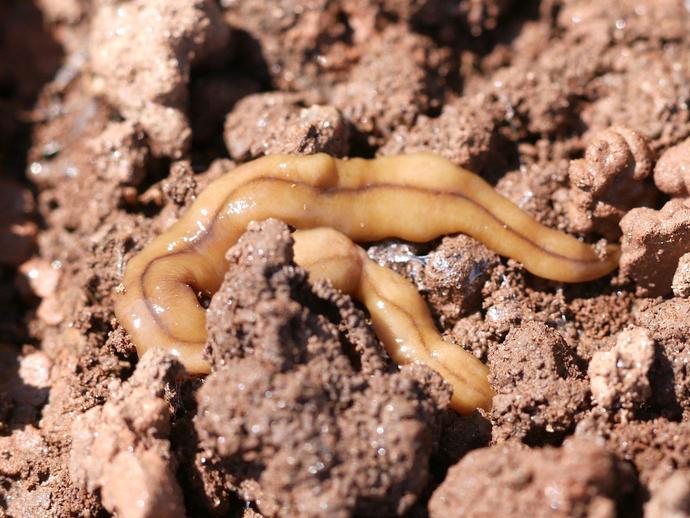April 14, 2021
It's time for today's edition of #BenInNature presented by our friends at Carter Bank & Trust!
Here's another cool find from the Patrick County home of a friend of the museum that staff visited last week: Bipalium adventitium, the wandering broadhead planarian!
First off, we should probably establish what a planarian is, because this critter belongs to a phylum that has never before been featured in a #BenInNature post. This fellow is a member of the phylum Platyhelminthes, also known as flatworms. Flatworms are simple organisms with soft, segmented bodies, and they are bilaterally symmetrical, meaning the left and right sides of their bodies are mirror images of each other. They lack internal body cavities and they don't have circulatory or respiratory organs. Needless to say, flatworms are pretty simple organisms!
While many flatworms are aquatic, this particular one belongs to the family Geoplanidae, also known as the land flatworms or land planarians. The wandering broadhead planarian is a predator of earthworms; it follows a chemical trail left behind by earthworms, and when it finds one, it crawls overtop of it, wraps itself around it, and begins chowing down.
Unfortunately, this species is an invasive that was accidentally brought over from Asia sometime in the 1900s, probably as a stowaway in exotic plants. It can now be found in scattered locations across North America. Because our native earthworms aren't familiar with it, they don't attempt to escape its clutches until it's too late.
While these flatworms are pretty odd-looking, you have nothing to fear if you happen to find one in your garden. They don't pose a danger to humans, just earthworms.
ABOUT #BenInNature
Social distancing can be difficult, but it presents a great opportunity to become reacquainted with nature. In this series of posts, Administrator of Science Ben Williams ventures outdoors to record a snapshot of the unique sights that can be found in the natural world. New updates are posted Monday - Friday, with previous posts highlighted on the weekends. This series of posts is made possible thanks to the support of VMNH Corporate Partner Carter Bank & Trust (www.cbtcares.com)
NATURE PHOTO IDENTIFICATIONS
If you discover something in nature that you would like help identifying, be sure to message us right here on Facebook with a picture (please include location and date of picture) and we'll have our experts help you identify it!

 Hours & Admissions
Hours & Admissions Directions
Directions

